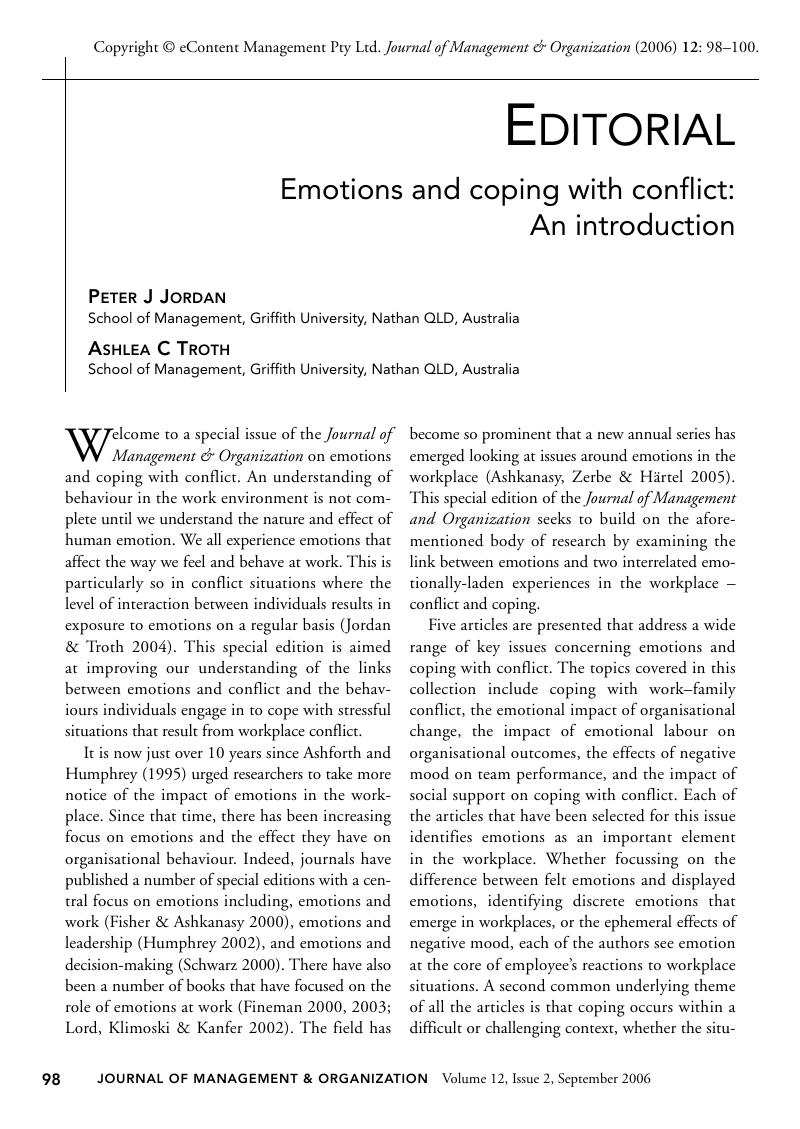Crossref Citations
This article has been cited by the following publications. This list is generated based on data provided by Crossref.
Paul, Gregory D.
Geddes, Deanna
Jones, Tricia S.
and
Donohue, William A.
2016.
Revitalizing Conflict Research with a Communication Perspective: Celebrating and Learning from Linda Putnam's Contributions to the Study of Conflict.
Negotiation and Conflict Management Research,
Vol. 9,
Issue. 4,
p.
309.
Kitsios, Fotis
Papageorgiou, Eumorfia
Kamariotou, Maria
Perifanis, Nikolaos A.
and
Talias, Michael A.
2022.
Emotional intelligence with the gender perspective in health organizations managers.
Heliyon,
Vol. 8,
Issue. 11,
p.
e11488.
Katsarou, Dimitra V.
Kougioumtzis, Georgios A.
Sofologi, Maria
Mantsos, Evangelos
Efthymiou, Efthymia
and
Sarris, Dimitrios
2024.
Building Mental Resilience in Children.
p.
145.



